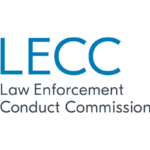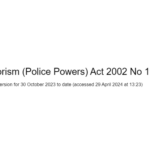NSW Police Watchdog to Review Lawfulness of Bail Compliance Checks

After a person is arrested and charged with a criminal offence in New South Wales, police will decide whether the defendant will be released on bail from the police station, or remanded in custody to face a bail application in court.
Bail tests
If police bail is refused, the defendant must be brought before a court as soon as practicable, where the magistrate will apply what is known as the ‘unacceptable risk test’ or, in certain serious situations, an additional test known as the ‘show cause test’ to determine whether they are to be released on bail.
Bail conditions
A grant of bail can come with a range of conditions, such as reporting to a police station at specified times, residing at a particular premises, not associating with certain persons, not entering specified areas or places, and depositing money as a security.
These bail conditions may also have an enforcement condition added on to them.
Bail compliance checks
Police conduct compliance checks in relation to bail conditions, especially if there is an enforcement condition in place.
Around 100,000 bail compliance checks are conducted annually. And an example of how an enforcement condition operates is if a bail condition prohibits alcohol, it can be accompanied by an enforcement condition permitting officers to conduct random breath tests to ensure compliance.
Complaints about bail compliance checks
The sole oversight body for New South Wales police, however, has received complaints over recent years regarding how officers are conducting compliance checks relating to curfews, especially when there’s no enforcement condition applying, or the owner has refused officers permission onto their property.
And the Law Enforcement Conduct Commission last month released its Bail Compliance Checks in NSW paper, which reviews the legislative framework regarding the practice of bail monitoring to consider whether it’s leading to appropriate and lawful checks or there’s room for reform.
Bail compliance law
Bail laws are contained in the Bail Act 2013 (NSW) (the Act). Section 30 sets out the law relating to enforcement conditions, which can only be imposed by a court when a prosecutor requests one, and if a risk assessment finds it is required, the order must detail any directions an officer can give.
Section 77 of the Act outlines actions officers may take to enforce bail requirements, which include issuing a court attendance notice (CAN) or arresting the bailed person without a warrant. And while failure to comply with a condition isn’t an offence, the prosecution can apply for bail to be revoked.
The only provision relating to applying enforcement conditions is contained in section 81, which permits the giving of directions as required by the enforcement condition, or when an officer holds a reasonable suspicion that the subject isn’t complying with the bail condition that’s being enforced.
Developing the current system
Bail enforcement conditions were introduced in 2012. And they replaced a system of compliance checks, which both the courts or police could impose, due to issues that were arising regarding how often officers would show up at a person’s front door early morning checking for curfew adherence.
A problem the NSW Law Reform Commission identified was that police were checking curfew conditions often on enclosed lands, which implied that officers had licence to act in this manner. And another issue noted was whether this implied licence could be revoked by a property owner.
Yet, on introducing the 2012 amendments, the Coalition asserted it was NSW police that had an issue with compliance checks, as when officers showed up at a residence to ensure the bailed person was adhering to a curfew, officers didn’t have the power to make them present at the front door.
And the new law did include measures to ensure checks weren’t applied routinely, which now sit under subsection 30(5) of the Act, and enforcement conditions are only applied when “reasonable and necessary,” and on consideration of bail history, reoffending risk and the impact on the subject.
Potentially trespass
A concern that remains regarding enforcement conditions is that police may still be trespassing when entering a property to do a residence or curfew check, as the law of trespass is “no person shall enter private property without the consent of the occupier unless he or she is justified by law”.
So, unless police officers have been granted permission when entering onto a property by means of statute or common law, they’re trespassing. And to avoid breaking the law in this manner, an officer must ask the permission of the property owner if they can enter onto their land.
Although, some current laws permit police officers to enter a private premises, which include to deal with a domestic violence incident, to prevent a breach of the peace, to arrest someone, including for not adhering to a bail condition, to execute a search warrant or for a child protection inspection.
Implied licence to access a property may apply in certain conditions, which include if a path or driveway can be accessed from the road with no fence preventing this. But if a sign is placed out the front of a house stating, “no visitors” or “no police officers”, then there is no licence to enter.
But even if there’s an inviting pathway, an officer only has implied licence for a legitimate purpose, including to check on breach of bail. Yet, this purpose must not cause “interference with possession or injury to the occupier or their guests”, and if told to leave, an officer’s’ implied licence is no more.
Timing and frequency of visits can cause injury if police conduct enforcement conditions multiple times a day, or late at night or early morning, as well as if officers keep waking up residents to perform these checks, as all these instances, can be considered an affront to a person’s dignity.
Bail compliance checking
NSW police operates the Suspect Targeting Management Plan, which is a list of civilians singled out for heightened surveillance by police, even if they’ve never been convicted of a crime. And while this is no longer applied to young people, the LECC had inquired into how it had been used on these kids.
And in terms of bail compliance checks, officers used them to monitor targets, made large numbers of arrests over breach of bail, while multiple late night and early morning visits were often being made by different officers.
The investigation further found that NSW police officers had little understanding of the limits to implied licence.
Yet, last year, a new section was added to the police manual relating to entering private property, and last November, bail compliance check standard operating procedures were published, and they contain provisions to stop officers doubling up on checking the one bailed person.
The SOPs include taking the most direct route to the door, not shining torches in windows, not bashing on doors, while if entry is barred by something like a gate, then entry is not permitted. And implied licence doesn’t allow an officer to direct a person to appear at the front door either.
However, if there is a bail enforcement condition, the bailed person can be ordered to the door. But any resident can still tell the police officer to leave the property.
And the SOPs clearly state that bail compliance checks can be carried out regardless of whether there is an enforcement condition.
Towards a new framework
Over the 12 months to June last year, 25 percent of all adults granted bail, or 38,859 arrestees, had conditions imposed upon their release, as did 46 percent of, or 4,107 arrestees under 18.
In terms of adults granted bail, 8,096 or 20 percent were First Nations adults and as for those bail granted aged under 18, 2,201 of them, or 53 percent, were Indigenous kids.
Of those adults granted an accommodation requirement, 24 percent were Aboriginal people, and of those given a bail curfew condition, 30 percent were First Nations adults.
The LECC “is keen to assess the effectiveness and appropriateness of the NSW Police Force approach to conducting bail compliance checks”, the forward to the report explains.
“We propose to consider whether the legislative framework is sufficiently clear on how police can appropriately and lawfully conduct bail compliance checks,” added the LECC, which is seeking submissions from the public on this issue, with the final date open to submit being the 25th of July.







